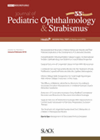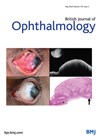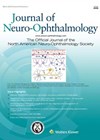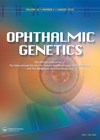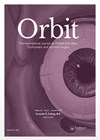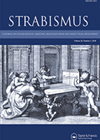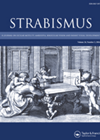
Journal Reviews
RetCam use in differential diagnosis for retinoblastoma
The authors aimed to evaluate RetCam fundus photography and fluorescein angiography (FA) findings in pseudo retinoblastoma. This was a retrospective review of 36 eyes of 28 patients (of which six were female) with 22 bilateral cases. Mean age at presentation...
Microsporidia-induced stromal keratitis: a new cause of presumed immune stromal (interstitial) keratitis
This is a non-comparative retrospective observational case series from India from 1 October 2020 to 31 January 2021. The inclusion criteria were: (1) presence of nummular / coin shaped lesions with at least one >2mm in size and / presence...
Current concepts of the uveitis-glaucoma-hyphaema (UGH) syndrome
The authors discuss pathophysiology, aetiology and current management strategies of UGH syndrome. The clinical features of UGH are different than initial descriptions. UGH today is most often associated with posterior chamber IOLs that are not placed within the capsular bag...
How common are ocular motor cranial nerve palsies following TBI?
This retrospective cohort study aimed to report the incidence of ocular cranial nerve palsy as a result of traumatic brain injury (TBI). Patients were identified using an insurance database using codes from the International Classification of Disease 9th and 10th...
Should we be looking for anemia in the presence of papilloedema?
The authors present a retrospective case notes review of patients diagnosed with idiopathic intracranial hypertension (IIH) presenting to a tertiary neuro-ophthalmology clinic over a 32-month period. The IIH group were age and sex matched with other patients attending the clinic...
Germline testing for uveal melanoma
The authors present a study of 114 consecutive patients presenting with uveal melanoma. Between 1 December 2019 and 1 November 2021 all patients over 18-years-old presenting to their centre with uveal melanoma were offered germline testing for variants in BAP1,...
Ophthalmic presentations and outcomes in Erdheim-Chester disease
This is a comprehensive article describing clinical manifestations and pathogenesis of Erdheim-Chester disease (ECD) followed by a literature review of the available treatments. The authors look to compare historical treatment (HT) with vemurafenib, a BRAF inhibitor. ECD is a non-Langerhans...
Differentiating orbital cellulitis from non-specific orbital inflammation
This is a retrospective study looking at whether common laboratory investigations can help differentiate between orbital cellulitis (OC) and non-specific orbital inflammation (NSOI). NSOI is a diagnosis of exclusion following negative investigations for systemic diseases such as IgG4-related disease, granulomatosis...
Prism adaptation test in acquired non-accommodative esotropia
This study investigated factors related to the increase in prism adapted angle in patients with acquired non-accommodative comitant esotropia (ANAET) who had strabismus surgery based on the results of a short prism adaptation test (PAT) and evaluated their outcomes. Short...
Testing of binocular contrast sensitivity as an objective measure of severity in intermittent exotropia
The purpose of this study was to compare the binocular contrast sensitivity ratio (measured with the Vision CSV-100 vector chart) between 40 intermittent exotropia patients and 40 normal controls. The authors also evaluated the effect of intermittent exotropia compensation status...
Inferior oblique muscle features
The authors aimed to study and morphometrically define the surgical anatomy of the inferior oblique muscle and its variations, and to outline surgical coordinates to aid location of the inferior oblique origin and nerve supply to the inferior oblique muscle....
Acute comitant esotropia as the presenting sign of diffuse intrinsic pontine glioma
The authors present four children with acute comitant esotropia (AACE) associated with diffuse intrinsic pontine glioma. All were treated with radiation therapy and all subsequently died due to the tumour. Children were aged 5, 5, 4.5 and 11 years. General...

